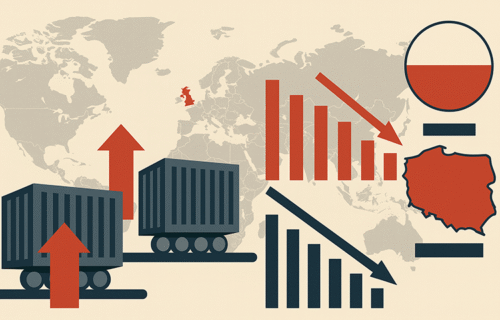Poland recorded a trade deficit in the first eight months of 2025 after several years of maintaining a modest surplus, according to new data from the national statistics office. The shift reflects stronger import activity and a slowdown in export growth, largely tied to energy prices, manufacturing costs, and weaker external demand.
Between January and August, the value of goods sold abroad remained roughly stable compared with last year, while the cost of imported products increased noticeably. The result was a shortfall estimated at more than PLN 20 billion. Economists point to rising import volumes from Asia, particularly China and South Korea, and steady demand for industrial components and consumer electronics as key drivers of the change.
Trade with European Union partners continues to dominate Poland’s economic landscape, with Germany maintaining its place as the country’s largest customer and supplier. Exports to the German market were slightly lower than in the previous year, while imports edged higher, narrowing what has traditionally been one of Poland’s strongest bilateral surpluses. Other major destinations for Polish goods included France, the Netherlands, and the Czech Republic.
Energy-related trade remained a weak spot. Imports of fuels and related commodities stayed high, while exports in that category declined, reflecting both lower global prices and a reduction in refinery activity. In contrast, agricultural and food exports grew solidly, supported by continued demand across the EU.
Despite the shift into deficit, Poland’s overall trade activity remains strong, suggesting that domestic demand and industrial production are still supporting imports even as global growth cools. Economists note that while this year’s numbers signal a less favourable trade position, they also point to a resilient economy that continues to attract investment and sustain industrial output despite international headwinds.
The coming months are expected to determine whether this deficit marks a temporary fluctuation or the beginning of a longer-term trend linked to structural changes in Poland’s export competitiveness and supply chain dependencies.
